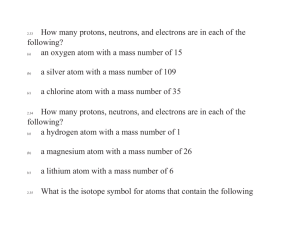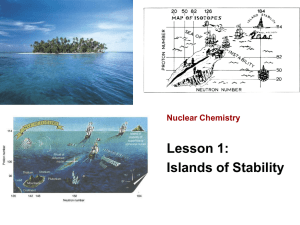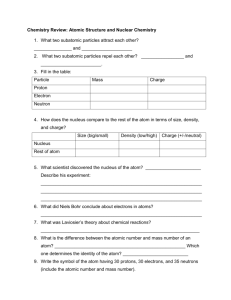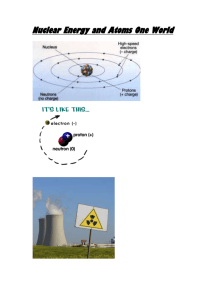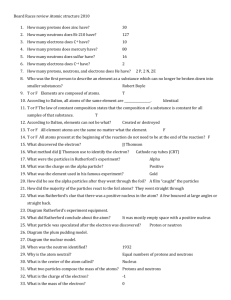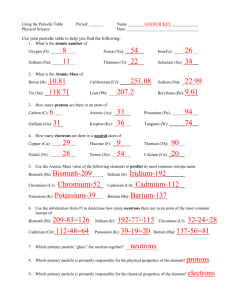Guided Atomic Notation
advertisement
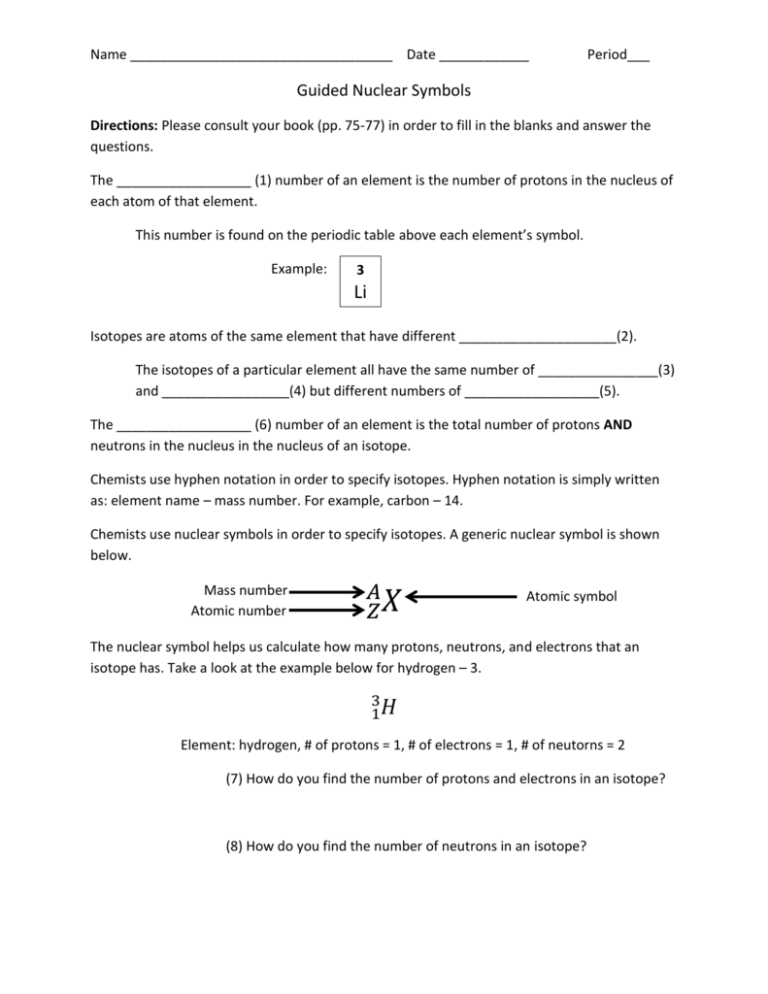
Name ___________________________________ Date ____________ Period___ Guided Nuclear Symbols Directions: Please consult your book (pp. 75-77) in order to fill in the blanks and answer the questions. The __________________ (1) number of an element is the number of protons in the nucleus of each atom of that element. This number is found on the periodic table above each element’s symbol. Example: 3 Li Isotopes are atoms of the same element that have different _____________________(2). The isotopes of a particular element all have the same number of ________________(3) and _________________(4) but different numbers of __________________(5). The __________________ (6) number of an element is the total number of protons AND neutrons in the nucleus in the nucleus of an isotope. Chemists use hyphen notation in order to specify isotopes. Hyphen notation is simply written as: element name – mass number. For example, carbon – 14. Chemists use nuclear symbols in order to specify isotopes. A generic nuclear symbol is shown below. Mass number Atomic number 𝐴 𝑍𝑋 Atomic symbol The nuclear symbol helps us calculate how many protons, neutrons, and electrons that an isotope has. Take a look at the example below for hydrogen – 3. 3 1𝐻 Element: hydrogen, # of protons = 1, # of electrons = 1, # of neutorns = 2 (7) How do you find the number of protons and electrons in an isotope? (8) How do you find the number of neutrons in an isotope? (9) What is an ion? (Look up the definition in your glossery). An ion is formed when an atom gains or loses electrons. An electron has a ___________________ [positive or negative] (10) charge. If an atom gains an electron there is __________________ [more or less] (11) negative charge in the atom and it is called an anion. If an atom loses an electron there is __________________ [more or less] (12) negative charge in the atom and it is called a cation. IMPORTANT NOTE: The electron is the ONLY subatomic particle involved in the formation of ions. Protons are NOT involved. We can also have nuclear symbols for ions. Take a look at the nuclear symbol for a sodium ion (cation). Charge Mass number 23 + Atomic number 11𝑁𝑎 Element: sodium, # of protons = 11, # of electrons = 10, # of neutrons = 12, charge = +1 (13) How do you find the number of electrons in a cation? Take a look at the nuclear symbol for a bromine ion (anion). 81 − 35𝐵𝑟 Element: bromine, # of protons = 35, # of electrons = 36, # of neutrons = 46 (14) How do you find the number of electrons in an anion? Fill out the table below. Nuclear Symbol Charge 236 0 92𝑈 40 2+ +2 20𝐶𝑎 14 3− -3 7𝑁 # of protons # of electrons # of neutrons

